Ayon Audio CD-35 II HF Edition – High Fidelity Review & Award
Ayon Audio CD-35 II HF Edition
Ascender – No 200
Text & Photos: Wojciech Pacula – December 1, 2020
WHY ARE WE
AND WHY So 200. “High Fidelity” edition
[“HIGH FIDELITY” number, which has just hit your hands, is 200. Since the magazine appears on a monthly basis – HF is a MONTHLY – it means that its first edition was on the web two hundred months earlier, that is SIXTEEN AND A HALF YEARS AGO. ]
NIE HAS THE ABILITY to predict events such as a pandemic, such as THE COVID-19 virus. That is, the possibility existed, because the inevitability of the arrival of this type of event in scientific circles has been talked about for years , it was also predicted by literature – it is an event from the group “inevitable”, but no one had any idea when it would happen, nor that it will look the way it looks.
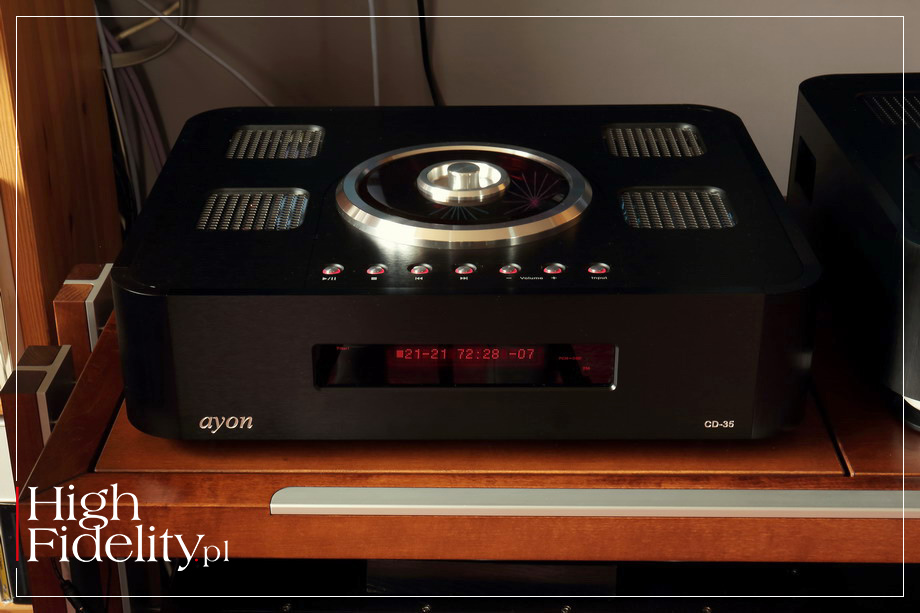
⸜ 2000. “HIGH FIDELITY” EDITIONS Austrian company AYON AUDIO has prepared a special version of the Compact Disc player – CD-35 II HF Edition; the device is limited to 35 pieces!
Interesting, but two hundred months ago, when the first issue of “High Fidelity” was released – HF is a monthly magazine – no one had any idea how the audio industry would change. And a lot has changed. The most serious, most fundamental, modification is about how to “consume” music. The most important branch of our industry, therefore, turned out to be products related to the widely understood computer audio. That is: file players, digital-to-analog converters, headphone amplifiers and headphones themselves.
Especially the latter have come a long way from uncomfortable products for professionals, used primarily in the studio, but also for freaky music lovers in their homes to fashionable (!) gadgets that everyone, of all ages, every profession and with any type of education. I will confess that I made a double wrong in their case. For the first time, when around-the-ear “studio” headphones with an impedance of 32 percent of the Ω.
I remember very well a conversation from 14, maybe 15 years ago with Andrzej Kisiel, the chief executive of the magazine “Audio”, for which I wrote at the time, in which he asked me why headphones with such low impedance are made at all. I answered, truthfully, and then they know that so that they can be used with mobile devices that do not have high-performance headphone amplifiers. To which Andrew replied that then they will immediately start wearing such large headphones young people on the street.
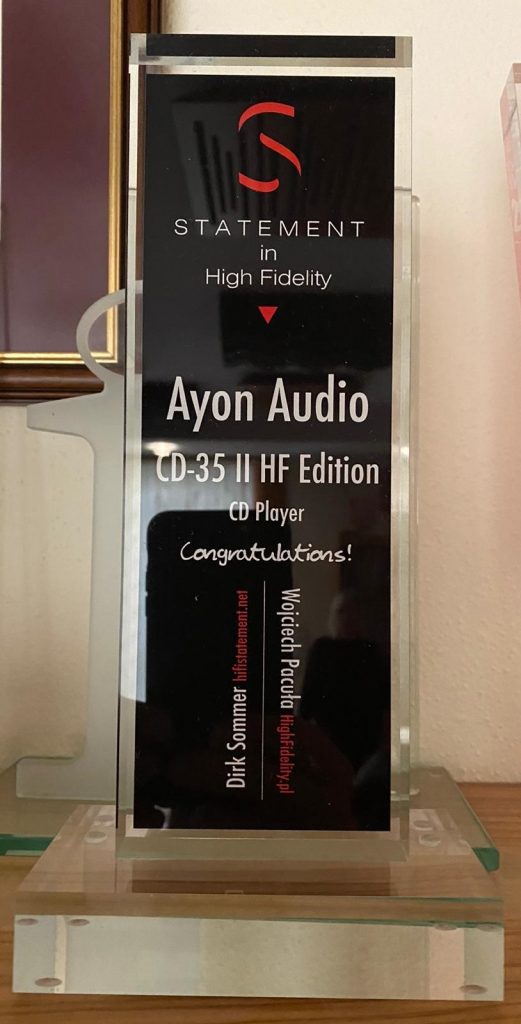
⸜ CD-35 II HF EDITION is a new device, and has already won a joint award for HIFISTATEMENT.net and “HIGH FIDELITY”: STATEMENT in High Fidelity; the second company awarded was Transrotor for tsr 9
What I laughed, what I ponabijałem – fortunately the chief “Audio” did not offend. I had all the advantages in my hand, that is, many years of experience working with headphones in the studio, listening – first fairy tales, and then music – with headphones since I remember, and for this I had a lot of different headphones at home. In my head it did not fit that you can be so careless and wear such models on the street, where contact with the environment is often a matter of life and death. I was wrong. Today, many young people – and not only (!) – walk the streets in large, closed headphones covering their entire ear.
The second mistake involved Apple’s AirPods wireless in-ear headphones, which were launched in 2016. These were not the first headphones of this type, namely Bluetooth and without a headband connecting the left and right handset, but Apple was the company that transferred this concept to mass electronics. I saw them at some kind of audio exhibition and found it a very cool idea, an interesting gadget, but rather a little developmental. My reservations aroused their fleetingness – literally: the lack of a headband and cables seemed to me an invitation to their notorious lost. I was wrong.
Today, there are not only Apple headphones on sale, but also extremely expensive in-ear headphones, Bluetooth, which entirely fit in the ear – an example of which will be products from CAMPFIRE AUDIO and DEVIALET. It’s still a niche, but most headphones have a cable, but a niche of development.
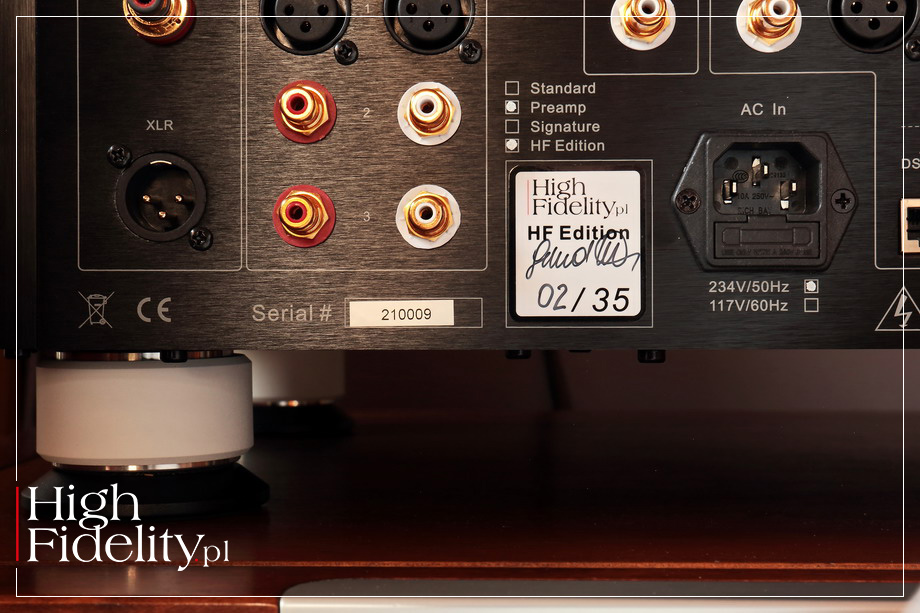
⸜ special status of the device is evidenced by a sticker signed by Gerhard Hirt
While some of our industry has changed beyond recognition, others have remained surprisingly insensitive to the computer revolution. After all, I do not have to recall a vinyl record that has returned to favor, nor to talk about tube amplifiers, which in the world of perfectionist audio, or audiophile, are now something as normal as convertibles among cars. It seems much more important to me how little has changed thinking about high-end sound. It’s still an elusive goal, not a matter of course, and we’re still trying to achieve it with old, proven methods.
Nor has anything changed that I am personally connected with, that is, the audio press. The changes that have taken place in it, that is, absolute and without a hint of thought, the admiration of home cinema in the context of audiophilism and our industry is nothing more than a nasty memory today. Admittedly, most audio magazines have misconception that stereo is over – and some have even changed the title to highlight this change – that I’m going to call the British magazine “What Hi-Fi?”, which has long been known as “What Hi-Fi? Sound and Vision”, however, they go back to their roots, and stereo is doing better than ever before. Also thanks to computer audio.
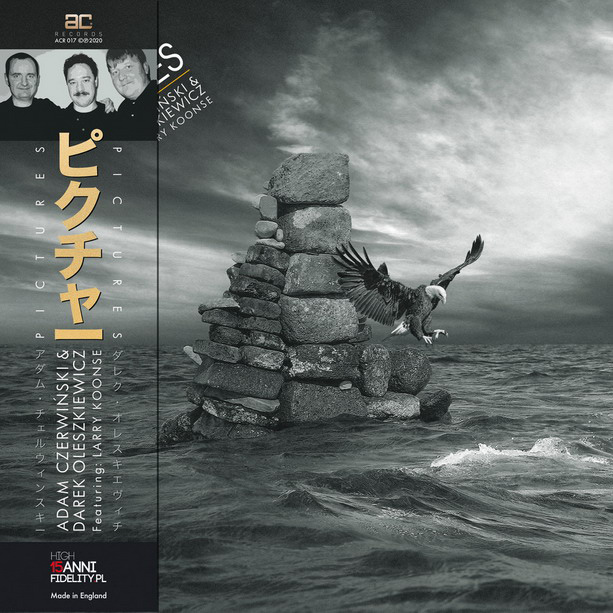
⸜ 200. HF edition is also celebrated with AC RECORDS – released under our patronage pictures trio Larry Koonse (guitar), Darek Oleszkiewicz (double bass) and Adam Czerwiński will have a special edition with additional ART PRINT, which will be signed by the graphic designer, Mr. Kuba Karłowski, and the owner of the publishing house ADAM CZERWIŃSKI
This time I was not wrong – from the beginning I thought it was two different, incompatible worlds: utility (video) and passionate (stereo). As a result of the withdrawal of home theater from audiophile orbit, spending on multi-channel audio – the victim of this change – also decreased dramatically. And yet it was all “on top“,it was enough to ask yourself, go deeper and try to analyze how”I” receive it and what “me” spins. In my case, the matter was clear: I am spinning music, two channels and CDs – SACD and CD, and the pattern for me is analog tape.
The press is another area where I think I got into my time and read it correctly. All I will say about it, what I will write, what I will say is tainted by subjective gaze, the prospect of “High Fidelity” – it’s clear. But also, both by reason of education and experience, I also have reason to consider these opinions to be quite sensible and objective.
I’m already talking about what’s going on. Well, during these 200 editions of our magazine specialized press, not only audio, but audio take care of, significantly layered. While previously, in pre-internet times, there were only a few titles available in a given language, but now there are at least a dozen of them, and in English a few dozen, and I’m talking only about the regularly published press, not blogs and forums, it’s quite something else. The dissection that I’m talking about is that their average level has decreased significantly and that the quality of individual titles has been shot.
The reason is, of course, universal internet access and affordable tools that allow anyone to become a “journalist” and a “publisher”. This caused dissuasion, later uncertainty, and finally indifference of readers. Professor Janusz Sławiński, a legend of the Polish world, in 2006 (!) wrote:
There is no longer a reader who would expect something from literature and make any claims and hopes against it. Anything that reaches the recipient is equally invalid to the recipient. ⸤ WE NEED A NEW ESSENTIALITY, “Europe” (appendix to the journal “Fact”), 2 November 2006
The idea was that today the text means little, and those that mean are rare and difficult to access. Which is a paradox, because access to information was supposed to be the most important legacy of the internet. And it turned out to be an illusion, it’s quite the opposite, because in times of fake news we are even more confused than ever before.
The audio writings are similar. Please do not misunderstood me – I read a lot myself, a few titles still subscribe, looking for information about a particular product comb the internet resources. But what I find in relation to what I use is in great disparity to the detriment of valuable materials. This is because most of the audio texts we come into contact with are either promotional materials, or weak substantively and even more technically, or even silly. In this way, it clearly makes itself known the dissection that I am talking about and can be pointed to “tabloids”, such as the already mentioned “What Hi-Fi?”, where the test often takes half a page, but also on elite writings, addressed to a narrow audience – let it be “HIFICRITIC”.
And now , from the very beginning, I was aware of these threats, and I wanted “High Fidelity” to stay away from both extremes. I believe that readers should get interesting text, text dense in substance and nicely written. We try to do it in HF, and although we don’t always succeed, that’s the goal we’re aiming for. It is also important that as many people as possible benefit from such text, but also that it is not superficial. That’s why the texts in HF are long.
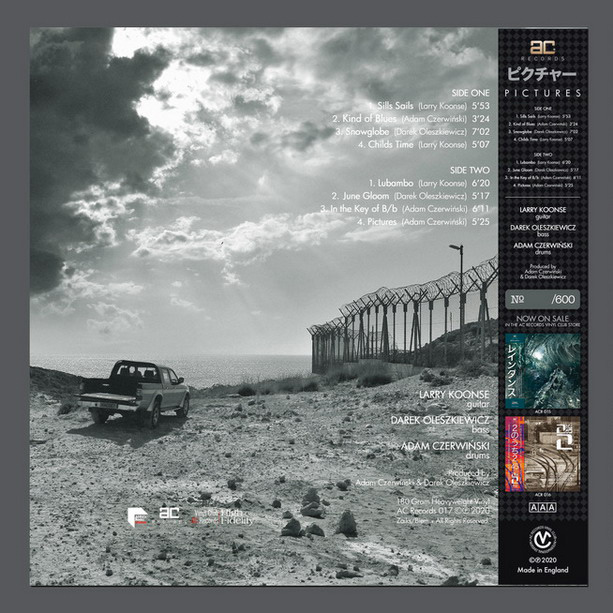
⸜ Back cover
When about ten years ago one of the distributors pointed out that we write too long texts, we started writing twice as long and even deeper. According to reading statistics, but also letters from the state and a response from the world (from the industry), it was a good move. Moreover, this is confirmed by recent research. This phrase for professionally written texts is visible in every field. The latest advertisement for the French magazine “Le Monde” says: “Write fewer articles, but better”.
In an article published in the latest issue of the industry bimonthly magazine “Press”, in which the author analyzes the French publishing market in the context of “pandeemic” changes, we read:
By spending more time, consumers will be more demanding and therefore expect more valuable content. Journalists will focus on better content development rather than condensing it. ⸤ MARIUSZ KOWALCZYK, Media of Special Care,”Press” 11-12 2020, p. 52
Amen!
The audio writing is intended to inform, entertain and give aesthetic satisfaction. My ideal is the quarterly “Stereo Sound”, although – I would add – not only. The Japanese impress me with their integrity, their in-depth examination of the problem and their attachment to the facts, against everything others say. It is thanks to them that many things that were initially accepted abroad as voodoo are today in audio something normal, everyday practice, because they are supported by theory, technique and listening experience.
I have no illusions – mass communication as the main reference system, as Maria Janion wrote about Polish culture in The Amazing Slavic region, is a fact and it dictates the dynamics of change. But in this dynamic there are solid things that gain from them. Every time not much, but as a result of the accumulation of small shifts – a lot. That’s why the best turntables, digital sources, amplifiers and even columns – that’s my original diagnosis – have been made in recent years. Minor changes have finally given a kind of “solstice”.
In order for this to make sense, both as creators, but also as readers, we must be active in our choices, we cannot stop at what is known and “non-sensitive”. Let us avoid what Piotr Czapliński described as the “effect of passivity”,something that characterizes modern culture (literature). As he says: “The ideology of immutability introduces cultural participants into communication immobilization” (Piotr Czapliński, Effect of passivity. Literature in normal time ,Kraków 2004, p. 130).
On the part of the creators, in turn, there must be an imperative related to education. Audio writing can’t just be a tabloid where something is hung there, but it should also be geared towards conveying different truths. Maria Janion says in this work that the basis of the humanities – and it is essential if we want to function as a society, engineers will not provide it – is the story: “It is not enough to see, experience or even com not com not to understand something. You still have to be able to tell.” And the story “… whether he wants it or not. . If she does not strive for form, she becomes incomprehensible” (Maria Janion, Amazing Slavic, Kraków 2006, p. 11).
And that’s what we’re here for – to tell stories. I understand the role of audio journalists involved in tests, interviews and reviews as the ancients have already understood, that is, as “storytellers”, people describing and explaining the world – in this case the audio world. Of course, there are plenty of stories in public spaces. In multiplicity and diversity there is nothing wrong, bad begins there when we choose badly.
Do you remember what Mietek Stoch said when asked by me why he had so many (over 35,000) LP discs? ” He said that although most of them will never reach, he has them all in order to have a CHOICE (MIECZYSŁAW STOCH, or 35,000 vinyls is not enough … , rozm. Wojciech Pacuła, “High Fidelity” No. 171, July 1, 2018). And this country and I wish you free choice. And immediately afterwards, so that we may be wise in this 🙂 For my part, I guarantee you, on our part, integrity, honesty and moderation.
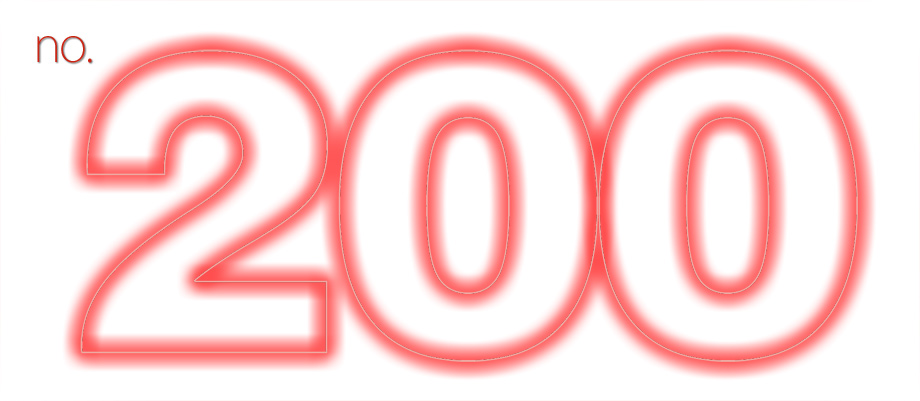
I THANK YOU for taking these 200 editions with us, for reading texts describing nearly 2,000 products, over 100 interviews, several hundred album reviews and 130. reports on meetings of the Cracow Sonic Society. It is for us – I believe that this is what all “HIGH FIDELITY” colleagues think – a great pleasure and responsibility at the same time. After all, we are here for you – to tell you STORIES, stories about sounds and music. ■
